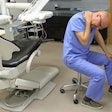
Editor's note: This is the first in a series of articles in which we will bring in an expert to address some of the misinformation we have read in various social media posts and groups.
Q: I accidentally was stuck by a needle at work. The patient said he was negative for hepatitis B and HIV. Someone in my practice told me I don’t really need to get tested, so what do I do?
A: Unfortunately, I hear (or read) this question far too often. A needlestick or sharps injury is also known as an exposure event, and, yes, you do need to get tested as soon as you’re able to. Don’t talk yourself into an unnecessary and unsafe situation because someone else told you it’s not important or you’re not sure of what is supposed to happen.
OSHA’s Bloodborne Pathogen’s Standard (CFR 1910.1030) states that employers must have an exposure control plan in place for this exact situation. In addition to having the plan, employers must train all employees on where the plan is kept, what’s in it, and what steps they should take if there is an exposure event.
This plan needs to have specific protocols in place for what happens when an exposure event occurs. Here is what is required:
- Identification of exposure risk of all employees by job title
- Procedures for postexposure management
- Immediate care of exposure injury
- Reporting injury to manager/owner
- Identification of employee and patient testing facility
The basic steps of dealing with an exposure incident include the following:
- Immediately stop what you’re doing or stop when it’s safe to do so.
- Wash the area with soap and water.
- Report the injury to the manager/owner.
- Inform the patient (if a patient is involved) of the exposure and the protocols, and ask if he or she is willing to get tested.
- As soon as you’re able to, visit a testing facility to get your blood drawn.
- The testing facility will work with you on prophylactic treatment and follow-up testing.
Some tips on the exposure management process include the following:
- Every facility is required to have this plan in place, so if you’re unsure of what your plan is, ask! It’s there to protect you as an employee.
- Employers are also required to pay for any testing and follow-up treatment.
- The emergency room is not the best place to go for postexposure testing. They can order the tests, but they are not equipped to provide follow-up care. Contracting with an occupational healthcare facility is the best option and can save your employer money.
- There will be different tests done depending on the situation and type of exposure incident. If the source patient is identified and agrees to testing, the testing may not be as involved as if the patient is unknown or refuses testing (which they have the right to do).
- It’s important that you get tested as soon as you’re able. There are certain prophylactic treatments that may have to be started within hours of the exposure.
- Documentation of the event, testing reports from the medical provider that did the testing, and follow-up steps should be kept by your employer.
We are all human, and these types of exposures happen. However, remember that your employer is responsible for your safety and well-being. Know your rights as an employee and what the plan is. Being prepared and training for these situations is the best way to stay safe.
Sarah Stream, MPH, CDA, is a seasoned dental professional, educator, and speaker. She is passionate about being a lifelong learner and sharing knowledge with other dental professionals on a safe dental visit and compliance. She currently specializes in OSHA, HIPAA and infection control, supporting dental facilities with their education and compliance needs.
You can reach Sarah with questions or to schedule an appointment at Stream Education and Consulting LLC or via email at [email protected].



















